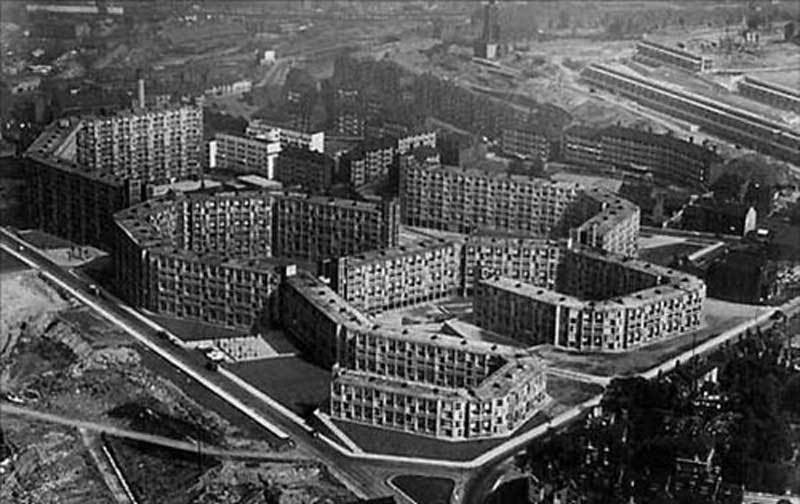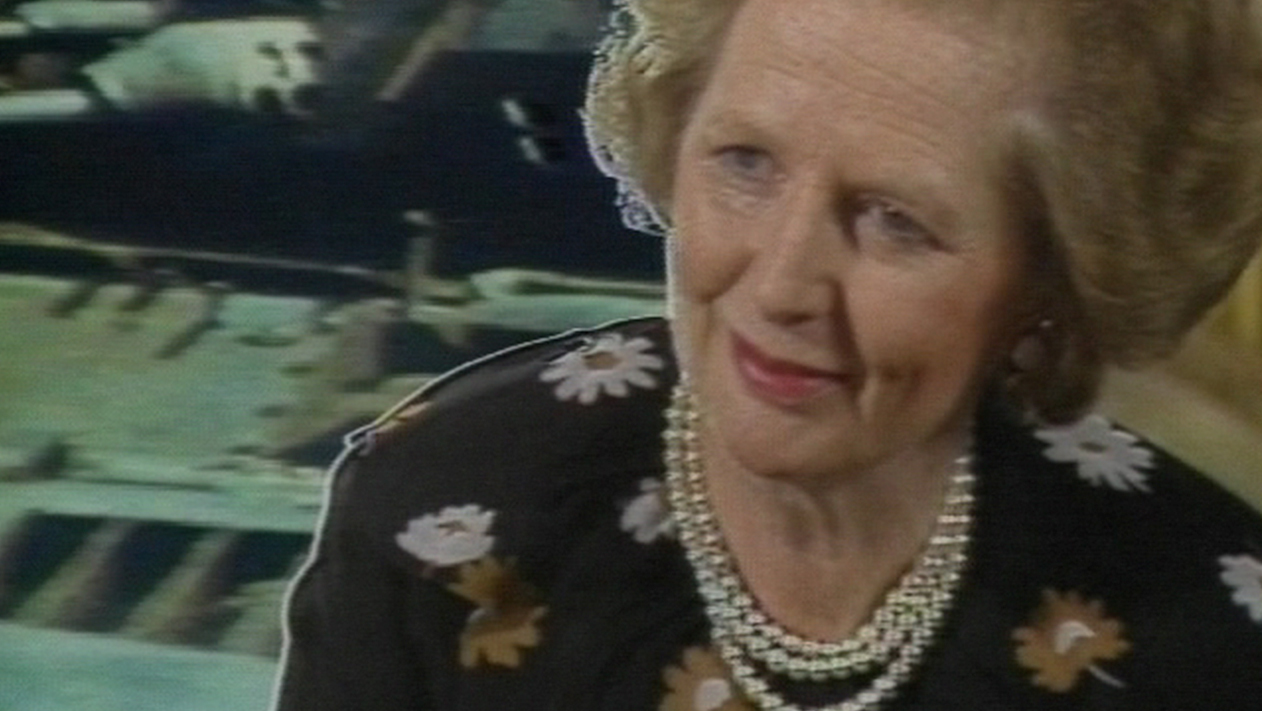Where were you in 82? To reconfigure Zomby’s maxim for an earlier decade. Why 1982? Five years after the punk explosion, the movement’s initial incendiary revolt had truly died out; that energy had fractured and dissipated and been commercialised into New Wave. But equally that energy and anti-everything was growing into something darker and more experimental. It was a sound coming from the fringes, from the dank deindustrialising north of England, powered by cheap synthesizers, it found form in groove-laden darkness.
A sound epitomised by Cabaret Voltaire, and their landmark 1982 single Yashar. A piece of swirling apocalyptic funk that sounded like it’d come a different emotional planet. This was dance music without ecstasy. The sound of disintegration. The sound of society on the brink of collapse. Industrial music for a deindustrialising society. A musical soundtrack to the four minute warning, a soundtrack to a country recording the highest unemployment figures since the 30s, a society on the brink of war with Argentina over a tiny, barely inhabited island archipelago in the south Atlantic. A soundtrack to the year Reagan became President, the year that Channel 4 launched, a year that ended with Greenham Common Women’s Peace Camp and the closure of the steel works of the Midlands. 1982 was the 80s crystallised; a year of crisis, regression, futurism, dystopia, war; a society convulsing on the dancefloor to the sound of alien new sound of tomorrow as society itself convulsed and contracted as the future came crashing in.
So where were you in 82? As Cabaret Voltaire primed the dancefloor with Yashar’s squealing Middle Eastern vocals, rolling industrial drums, dark pitchshifting, tweaking atmospheres, and a vocal intro culled from an old 60s sci-fi TV show; “there’s 70 billion people of Earth; where are they hiding?” It sounds like it could be from outer space, not Sheffield (which to some people could be, I guess). And I suppose if people are making music that sounds like it’s from the future, then you should ask yourself what’s so bad about the present.
1982 was undoubtedly the year of Sheffield. A year was ushered in with The Human League’s Don’t You Want Me Baby sitting at the top of the charts. The crowning commercial glory of a scene that had been at the experimental forefront of a new wave of culture since the mid-70s when Cabaret Voltaire formed. A timeframe that had seen The Human League go from art school punk outsiders pioneering unconventional machine music inspired by the electronic synthesizer sounds of German krautrock bands like Kraftwerk and Can and Neu! to wild pop hitmakers destined to top the charts. So forget the Arctic Monkeys and Pulp and grim kitchen sink realism, forget Kes and Coronation Street, this is the story of the North in the early 80s as a hive of dystopian futurism, and how Sheffield was the centre of it all.
Through the 70s, the city’s material history — a city built on steel, on manufacturing, industry — collapsed. First the steel crisis hit, and then, with the election of Margaret Thatcher in 79, a wave of freemarket neo-liberal economic policies wrecked havoc across the old industrial centres of the country. There’s a parallel drawn easily here between the material and musical histories of Detroit and Sheffield; how the industrial collapses in these cities powered an electronic renaissance that recalibrated culture well beyond these cities’ georgraphical borders. But whilst Detroit was still wallowing in its Motown hangover Cabaret Voltaire, Clock DVA, and The Human League were pushing Yorkshire forward. So as the politics of neo-liberalism stripped and destroyed the fabric of this once magnificent economic powerhouse it just happened to coincide with the rise of the cheap machines; new video editing software, and new music making possibilities, which together, in the wake of punk’s DIY attitude, helped create a new visual and musical language. Because of course it wasn’t just a musical, but a visual, movement.
Sheffield’s art school on Psalter Lane was one of the first places in the country to house the next generation of video editing software that was becoming available. This directly led to a generation of artists and musicians in the city experimenting with the emerging technology; what developed became known as “Scratch Video”. Provocative, subversive, and playful, Scratch Video utilised found footage in a Dada-esque disruption of the age’s dominant ideology; cutting together disparate images (politicians, pop culture and propaganda) as a way of undermining them all. Scratch Video is cinema in the abstract; pulling apart narrative conventions and reassembling them, in a way mirroring the music of Cabaret Voltaire, Clock DVA and early Human League; an apt visual soundtrack for aggressive spat out and dehumanised music, cutting through space and time. It formed the natural visual accompaniment to their music. Art in a non-art context for music that didn’t sound like music.
It was a relatively short lived phenomenon, mainly in 83/84/85, as Cabaret Voltaire turned away from the purity of the underground and took their combative ear to the mainstream, introducing more danceable structures and recognisable instruments into their sound. And as a short lived phenomenon that occurred mainly outside the gallery, it has been quite under represented in the history of underground art movements in this country and excluded from a canonical 80s that repositioned The Human League not as freaky outsiders with long hair, make-up, wearing high heels and making abrasive industrial music, but as big bombastic makers of pop music.
This short lived phenomenon of Scratch Video is also the focus of a new exhibition as part of Art Sheffield. Art Sheffield’s curator, Martin Clark, of Bergen Kunsthall in Norway, has selected only video and sound work to be displayed across the city, and often in site specific places that reflect not just the context of the art, but the unique histories of the city. From old Victorian works buildings, to the massive Moore Street Power Station to the new buildings of Sheffield Hallam university, indicative of the city’s protected turn away from an industrial economy and toward a knowledge. There’s work from a wide range of international artists, from Charles Atlas to Pat Hearn and Shelley Lake, who were exploring and exploding the possibilities of video in the 70s, to more recent experiments by the likes of Steven Claydon and Mark Fell. The Scratch Video (alongside the work of Mark Fell, though more on that later) forms the undeniable heart of the exhibition though.
Scratch Video is plugged into the global neuroses of the time, a weird dialogue between hyper-local issues and a globalised world. These artists were witness first hand to the destruction wreaked on working class communities by Thatcher’s government. But equally, these destructions were being inflicted on disparate parts of the globe too, the art coming out of Sheffield reflected that; it’s personal, provincial, political, global…
Alongside LUX and The BFI they’ve assembled a trove of rarely seen videos by filmmakers like George Barber, Nick Cope, Gorilla Tapes and John Maybury. Many on display for the first time in ages, or else displayed together for the first time, it’s a pleasure to see these wild pioneering new visions together, in the city that birthed them.
Scratch Video often features retaped footage taken from the TV, either newsreels or pop culture, and remixed (hence “scratch” like hip hop). Friendly Fires, by Nick Cope, for example, splices together images of fighter planes preparing for bombing raids with footage of both people going about their business in the West with victims of bombing in South East Asia. And of course obligatory images of Thatcher and Reagen. Or in another film from Nick Cope, soundtracked by This Heat, called Suffer Bomb Disease, the artist splices together various scenes of destruction from various conflicts across the globe. Amen: Survive the Coming Hard Times, is the darkest of this trio of his films, the most disturbing, its rhetoric subtler and more subtler, a frightening collage of images culled from news reports and overlaid with soundbites from Christian fundamentalist-survivalists in America. It’s frighteningly familiar, a terror of scenes of war and destruction that make you feel like the apocalypse is coming. Which was a distinct feeling in air at the time of course. Elsewhere artists like George Barber and the Duvet Brothers were interested as much in the liberating power of the technology to create new visual forms as they were in blistering social critique, although Scratch Video beautifully blurs the two; abstract satire, might be appropriate label. Critical of the emotional falsity and blandness of mainstream culture, they re-crafted it into a video language, that soon enough, via MTV and late-night Channel 4 would ironically become part of the mainstream.

By the time Scratch Video was on the wane the centre of electronic music had moved across the ocean to Detroit, another crumbling dystopian cityscape that gave way to another vibrant new musical form, techno, an amalgamation of Chicago’s house scene and European synthpop. It of course came back, repurposed and repackaged with the Second Summer Of Love (dancing with ectasy!) in 1988. It’s a time Mark Fell, producer and sound artist explores in his piece as part of Art Sheffield, Structural Solutions To The Question of Being, a new, site specific sound installation Fell has housed within a long abandoned pub in the long abandoned brutalist housing estate of Park Hill. In it Fell replays a pirate radio broadcast from 92 in the vacant and eerie pub in the vacant and eerie state. The sound of the hangover from the summer of love blaring out, as acid house gave way to hardcore, there’s a flashing strobe, rave flyers, a smoke machine. In the back room Rebecca Seager and Solid State talk about this very specific time and place in Sheffield’s history. The effect is oddly uncanny, oddly captivating, a museum for memories, fleeting, forgotten, mythologised moments of outsider art. Park Hill has long been a symbol for the degeneration of the city. This looming empty edifice sitting up on the hill, looking out over the town like a concrete fortress, the utopian modernist dreams of the 60s crumbling and empty.
If the Sheffield music and art scene were rebelling against anything in the 80s, it still feels oddly prescient, a warning that no one paid attention to, or were too powerless to stop, a rebellion that warned of the present we’re living through now, but also a call to a revolutionary form of culture that could take on the mainstream.
Art Sheffield 2016 runs until 8 May
Credits
Text Felix Petty
Lead image from The Duvet Brothers, Virgin, 1985. Courtesy the artist and Lux.
